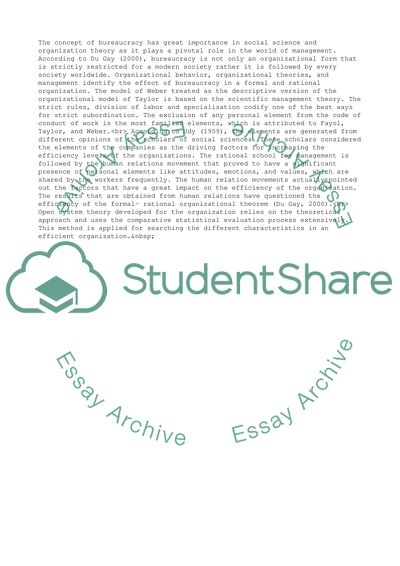Cite this document
(“Concept of bureaucracy as an effective system of organization Essay”, n.d.)
Concept of bureaucracy as an effective system of organization Essay. Retrieved from https://studentshare.org/business/1656047-concept-of-bureaucracy-as-an-effective-system-of-organization
Concept of bureaucracy as an effective system of organization Essay. Retrieved from https://studentshare.org/business/1656047-concept-of-bureaucracy-as-an-effective-system-of-organization
(Concept of Bureaucracy As an Effective System of Organization Essay)
Concept of Bureaucracy As an Effective System of Organization Essay. https://studentshare.org/business/1656047-concept-of-bureaucracy-as-an-effective-system-of-organization.
Concept of Bureaucracy As an Effective System of Organization Essay. https://studentshare.org/business/1656047-concept-of-bureaucracy-as-an-effective-system-of-organization.
“Concept of Bureaucracy As an Effective System of Organization Essay”, n.d. https://studentshare.org/business/1656047-concept-of-bureaucracy-as-an-effective-system-of-organization.


